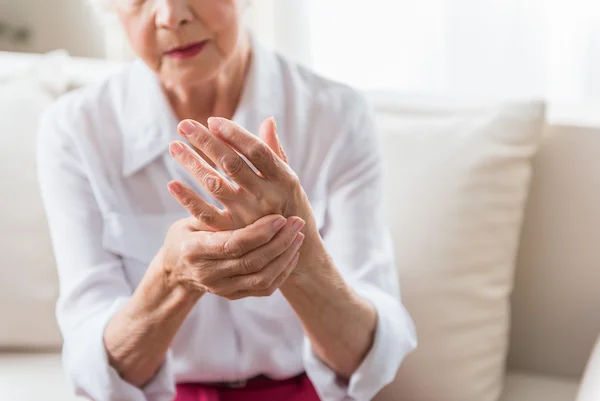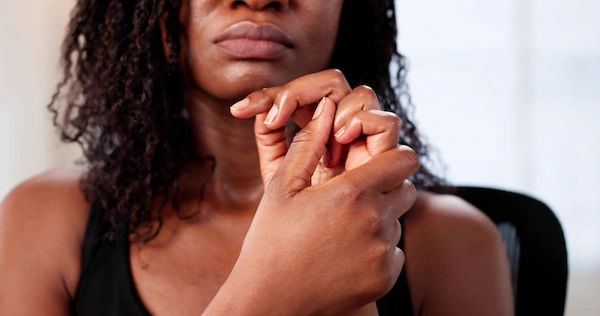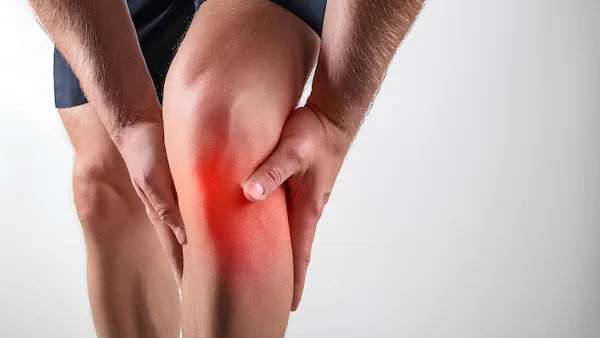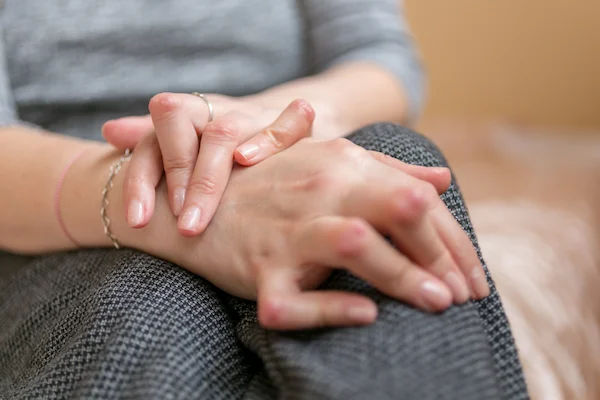Guide to Save Yourself Arthritis
Learn practical strategies for arthritis prevention and management, focusing on key areas like diet, exercise, weight management, and joint protection to reduce pain and preserve mobility.


Introduction
Arthritis isn’t one disease—it’s a group of conditions that cause joint pain, stiffness, and swelling. Whether you’ve noticed morning stiffness in your fingers, a dull ache in your knees after a walk, or unexplained fatigue, you’re not alone. Arthritis affects hundreds of millions globally and is one of the leading causes of disability, yet a lot of the pain is preventable or manageable with the right steps. This practical guide shows you how to save yourself from arthritis—by catching it early, staying active without flare-ups, eating to calm inflammation, and choosing treatments that work. You’ll learn how osteoarthritis differs from rheumatoid arthritis, the tests doctors use, and the lifestyle changes that pay off most. We’ve translated the latest science into clear action steps you can start today, and we’ll point you to trusted resources and when to get help. If symptoms persist beyond two weeks or disrupt your daily life, consult a doctor online with Apollo 24|7 for further evaluation. Let’s build a plan that keeps you moving, confident, and in control.
Arthritis 101: What It Is (and Isn’t)?
Arthritis refers to more than 100 conditions marked by joint inflammation and pain. The most common is osteoarthritis (OA), where cartilage gradually wears down, often in the knees, hips, hands, and spine. Rheumatoid arthritis (RA) is different: it’s an autoimmune disease in which the immune system attacks the synovium (joint lining), causing inflammation, swelling, and potential joint damage if untreated. Gout is a metabolic arthritis caused by uric acid crystal deposition, often striking the big toe with sudden, severe pain. Psoriatic arthritis (PsA) occurs in some people with psoriasis, affecting joints and sometimes the spine. These differences matter, because the best treatments vary by type. For instance, RA needs disease-modifying drugs, while OA focuses on movement, weight management, and pain relief. Common myths include “arthritis only happens to the elderly” and “if it hurts, stop all activity.” In reality, arthritis can occur at any age, and movement is medicine—done wisely. A quick anatomy refresher helps: joints have cartilage for smooth gliding, a synovial lining that makes nourishing fluid, ligaments for stability, and muscles that support motion. Inflammation can irritate the synovium or damage cartilage, causing pain and stiffness. Knowing your type is step one to choosing the right care. If you’re unsure, start with gentle exercise and track symptoms, then seek diagnosis to tailor your plan.
The two big families: Osteoarthritis vs Rheumatoid arthritis
OA is mechanical/degenerative with episodic inflammation; RA is systemic autoimmune with morning stiffness often >30–60 minutes and symmetrical small joint involvement.
Consult a Top General Physician for Personalised Advice
Other common types: Gout and Psoriatic arthritis
Gout flares are often sudden and severe; PsA may include dactylitis (“sausage digits”) and nail changes.
How joints work: cartilage, synovium, and inflammation basics?
Cartilage cushions; synovium lubricates; inflammation disrupts both and sensitizes nerves.
Myths to drop now (cracking knuckles, “no pain no gain”)
Cracking knuckles isn’t linked to arthritis. Pain is a signal—move, but adjust intensity and form.
Spotting Arthritis Early: Symptoms, Red Flags, and Urgency
Early signs vary. OA often presents as activity-related pain, short morning stiffness (<30 minutes), and bony enlargement at finger joints. RA tends to cause prolonged morning stiffness, warm swollen joints, and fatigue; symptoms are usually symmetrical in hands and feet. Gout features sudden, intense pain, redness, and swelling—classically in the big toe. Red flags needing prompt evaluation include joint swelling plus fever, new numbness/weakness, severe night pain, or rapidly worsening function. Early recognition is vital: in RA, starting disease-modifying therapy within months can prevent permanent damage and disability. In OA, early weight management and strength training can slow progression and reduce flare-ups. Keep a symptom diary noting duration of morning stiffness, swelling, and what movements trigger pain. If you suspect inflammatory arthritis (RA or PsA), or you have recurrent gout flares, don’t delay care—these types respond best to early, targeted treatment. As a rule of thumb: if pain or swelling lasts beyond two weeks, or if a joint is acutely hot and very tender (possible infection or gout), consult a doctor online with Apollo 24|7 for guidance and next steps. [1–4,6–7]
Early clues in hands, knees, hips, and feet
Hand pain with swelling suggests inflammatory arthritis; knee pain after activity with crepitus suggests OA.
Morning stiffness and fatigue: what they signal
Longer stiffness often indicates inflammatory arthritis; fatigue is common in RA and PsA.
When symptoms suggest RA vs OA vs gout?
RA: symmetric small joints; OA: load-bearing joints; gout: sudden monoarticular flares.
Red flags that need prompt medical care
Fever with joint swelling, rapidly progressive pain, or inability to bear weight—seek urgent care.
Getting Diagnosed: Tests, Imaging, and What to Expect
Diagnosis starts with history: which joints hurt, when, what helps or worsens them, morning stiffness length, and any systemic symptoms like rashes or fevers. The physical exam looks for swelling, warmth, tenderness, reduced range of motion, and joint stability. Imaging helps clarify type and severity: X-rays show joint space narrowing and osteophytes in OA; ultrasound can detect synovitis and erosions in RA; MRI is sensitive for early inflammatory changes and soft-tissue injury. Blood tests can support diagnosis and track inflammation: ESR and CRP indicate activity; rheumatoid factor (RF) and anti-CCP antibodies raise the likelihood of RA; uric acid supports gout diagnosis (though it can be normal during an acute flare). Vitamin D status can affect musculoskeletal pain and function. For recurrent or unclear cases, a rheumatologist’s input is valuable; they can order advanced tests and start disease-modifying therapy promptly if needed. Apollo 24|7 offers convenient home collection for tests like vitamin D or HbA1c, which can be relevant when weight, metabolic health, or diabetes complicate arthritis care. Expect a process: initial evaluation, a trial of conservative measures, and follow-up to see what changes. Accurate diagnosis lets you choose between RA-specific treatments or OA-focused strategies.
History and physical exam
Patterns over time, symmetry, and joint count inform likely type; function and gait are assessed.
Imaging: X-ray, ultrasound, MRI—what each shows
X-ray for structural changes; ultrasound for synovitis/effusion; MRI for early inflammatory or soft-tissue findings.
Labs that matter: ESR/CRP, RF, anti-CCP, uric acid, vitamin D
RF/anti-CCP for RA; uric acid for gout; ESR/CRP for inflammation; vitamin D for bone/muscle health.
When to see a rheumatologist?
Rapidly progressive swelling, multiple joints, systemic features, or unclear diagnosis.
Treatment That Works: From Home Care to Medicines
The strongest evidence supports a combo: education, physical activity, weight management, and tailored medications. For OA, start with self-management: structured exercise (aerobic and strength), joint protection, and weight loss if BMI is elevated. Even 5–10% weight reduction can substantially reduce knee pain; each pound lost reduces knee joint load by roughly four pounds during walking, easing symptoms. Topical NSAIDs help knee and hand OA with fewer systemic side effects; oral NSAIDs work but require caution with stomach, kidney, and heart risks. For flare pain, short courses may be appropriate under guidance. Injections (corticosteroids) can provide temporary relief in OA; hyaluronic acid has mixed evidence. In RA and PsA, disease-modifying antirheumatic drugs (DMARDs) such as methotrexate, and targeted therapies (biologics, JAK inhibitors) can quell inflammation and prevent damage—early treatment is key. Heat/cold therapy helps: heat for stiffness, cold for swelling. Supplements? Omega-3s may reduce RA inflammation; turmeric (curcumin) shows modest pain relief in some OA studies; discuss with your clinician to avoid interactions. Build a “toolkit”: daily movement, heat routine, topical analgesic, footwear modifications, and periodic check-ins. If your condition does not improve after trying these methods, book a physical visit to a doctor with Apollo 24|7 for a personalized plan.
Proven self-management: activity, weight control, and education
Self-management programs and physical activity reduce pain and improve function.
Medications: NSAIDs, topical agents, injections; RA DMARDs and biologics
Right drug for the right arthritis type; monitor side effects and effectiveness.
Heat vs cold therapy: when and how
Heat pre-movement; ice after activity or during swelling flares. 10–15 minutes per session.
Supplements: omega-3, turmeric—what evidence says
Omega-3s may help RA inflammation; turmeric offers modest OA pain benefit in some trials.
Move Without Making It Worse: Exercise, Physio, and Joint Protection
Movement is medicine for arthritis—but the dose and delivery matter. Aim for a 3-part plan: low-impact aerobic exercise (20–30 minutes, 3–5 days/week), strength training (2–3 days/week, focusing on hips, thighs, core, and scapular muscles), and daily mobility work (gentle range-of-motion, tai chi, or yoga). Examples include brisk walking, cycling, swimming, or aquatic therapy, which reduces joint load while keeping intensity up. Start with “conversation pace” cardio and build gradually using the 10% rule (add only 10% time or distance weekly). Use “movement snacks”: 2–5 minutes of joint-friendly motion every hour to combat stiffness. A physical therapist can teach pacing strategies, proper form, and joint protection techniques like avoiding deep knee bends with load if you have knee OA, or using adaptive tools for hand tasks. Bracing, shoe inserts, and rocker-bottom shoes can reduce painful joint loads. Intensity should be enough to feel warmer and lightly fatigued, not flared: a slight increase in symptoms that settles within 24 hours is usually acceptable; pain that persists beyond 24–48 hours signals you should scale back. Consider tai chi for balance and pain reduction—multiple studies show benefits for knee OA. This “test-and-tweak” approach keeps you active without boom-and-bust cycles.
The 3-part plan: aerobic, strength, and mobility
Blend modalities across the week; consistency beats intensity.
Low-impact choices: walking, cycling, aquatic therapy, tai chi
Aquatic programs are excellent for knee/hip OA; tai chi supports balance and pain relief.
Micro-movement “snacks” and pacing to prevent flares
Set a timer to stand, mobilize hips/ankles, or perform 10 sit-to-stands every hour.
Bracing, shoe inserts, and ergonomic changes
Unloader braces for knee OA; cushioned shoes; kitchen/workstation changes to reduce strain.
Eat to Ease Inflammation: Diet, Weight, and Smart Choices
Diet won’t “cure” arthritis, but it can calm inflammation and reduce pain. A Mediterranean-style pattern—rich in vegetables, fruits, legumes, whole grains, nuts, olive oil, and fish—has evidence for improved pain and function in inflammatory arthritis and overall cardiometabolic health. For weight-bearing joints, weight loss is powerful: even 5–10% reduction can significantly ease knee OA symptoms and improve mobility. For gout, limit high-purine foods (organ meats, certain seafood), reduce sugary drinks and excess alcohol (especially beer), and stay well hydrated; consider low-fat dairy, which may reduce gout risk. Smart swaps include fatty fish (omega-3 for rheumatoid arthritis), colorful produce (polyphenols), and spices like turmeric and ginger. Emphasize fiber to support a healthy gut microbiome, which may influence systemic inflammation. If you’re unsure where to start, try the “3-2-1” plate: 3 fistfuls of non-starchy veg, 2 palm-sized lean proteins or legumes, 1 cupped hand whole grain—dressed with olive oil and herbs. Track which foods worsen or improve your symptoms. Apollo 24|7 offers a convenient home collection for tests like HbA1c and lipid profiles to monitor metabolic health as you adjust your diet and activity.
Mediterranean-style pattern and evidence
Associated with less inflammation and better function in inflammatory arthritis.
Weight loss and knee load: why 5–10% matters
Each pound lost reduces knee load several-fold with each step; pain often improves.
Purine choices for gout; alcohol and sugar notes
- Limit high-purine meats, sugary drinks; moderate alcohol; increase hydration and low-fat dairy.
- Smart swaps: omega-3s, fiber, spices
- Salmon, walnuts, legumes, berries, turmeric, ginger; limit ultra-processed foods.
Living Well for the Long Haul: Pain, Stress, Sleep, Work, and Support
Pain is not just a joint problem; it’s influenced by sleep, stress, mood, and routine. Build a daily rhythm that supports your joints: warm shower or a heating pad to “pre-warm” stiff joints, a 5–10 minute mobility routine, and a walk after meals to reduce glucose spikes and stiffness. Pain skills like cognitive behavioral therapy (CBT), mindfulness, and paced breathing can reduce pain intensity and the stress response. Prioritize sleep hygiene: consistent schedule, cool dark room, and screen curfew. At work and home, set up ergonomic stations: adjust chair height for hip-knee alignment, use a lumbar cushion, keep keyboards at elbow level, and use jar openers and padded grips to offload hand joints. Create a “flare plan”: scale back intensity by 20–40%, switch to aquatic or cycling, use ice or heat, and check footwear and sleep debt. Track your progress monthly with a simple score: average daily pain (0–10), number of active minutes, and morning stiffness duration. If you have an inflammatory arthritis, schedule periodic reviews to optimize DMARDs and monitor labs. Join a support group; connection and accountability can make changes stick.
Pain skills: CBT, mindfulness, heat routines, sleep hygiene
These reduce pain amplification and improve coping.
Work and home ergonomics that protect joints
Small layout tweaks reduce cumulative strain and fatigue.
Flare plan and relapse prevention
Have a playbook: adjust activity, use modalities, review triggers, and check-in if flares persist.
Building your care team and tracking progress
Primary care, rheumatology, PT, dietitian; use a simple dashboard for monthly check-ins.
When to Seek Care—and How Apollo 24|7 Helps?
Urgent signs include a hot, red, very tender joint with fever (possible infection or acute gout), sudden inability to bear weight, or new weakness/numbness. If your symptoms persist beyond two weeks, are progressively worsening, or affect multiple joints with morning stiffness, seek evaluation. Online consults with Apollo 24|7 can triage your symptoms, order labs (like ESR/CRP, RF, anti-CCP, uric acid, vitamin D) with home collection, and guide initial self-management. If needed, book a physical visit to a doctor with Apollo 24|7 for hands-on exam, imaging referrals, or rheumatology input. For inflammatory arthritis, early DMARDs can prevent damage; for osteoarthritis, a structured activity plan, weight management, and targeted pain relief will be your backbone. Use follow-ups to refine your plan every 4–8 weeks initially, then quarterly. Your goal is not just fewer bad days—it’s more strong, confident days, doing what matters to you.
Conclusion
Arthritis can feel overwhelming, but most people can take back control with a clear, consistent plan. Start by understanding what type of arthritis you have—OA, RA, gout, or PsA—because the right diagnosis leads to the right treatments. Then build your foundation: daily movement, smart pacing, and a Mediterranean-style diet that supports a healthy weight and reduces inflammation. Add practical tools—heat before activity, ice after flares, topical NSAIDs, supportive footwear, and ergonomic tweaks at home and work. For inflammatory arthritis, modern medicines like DMARDs and biologics can protect your joints and your future when started early. Track your progress each month and make small, sustainable tweaks rather than chasing quick fixes. If your symptoms persist beyond two weeks, or if you have red flags like a hot, swollen joint with fever, get help quickly; an online consult with Apollo 24|7 can fast-track labs, imaging, and next steps. You deserve more good days—walking, working, playing, and sleeping with less pain and more confidence. Start today with one positive action: a 10-minute walk after dinner, a warm shower to loosen up in the morning, or prepping a colorful, anti-inflammatory meal. Small steps add up to big relief.
Consult a Top General Physician
Consult a Top General Physician

Dr. Anand Ravi
General Physician
2 Years • MBBS
Bengaluru
PRESTIGE SHANTHINIKETAN - SOCIETY CLINIC, Bengaluru

Dr. Vivek D
General Physician
4 Years • MBBS
Bengaluru
PRESTIGE SHANTHINIKETAN - SOCIETY CLINIC, Bengaluru

Dr Syed Mateen Pasha
General Physician
2 Years • MBBS
Bengaluru
PRESTIGE SHANTHINIKETAN - SOCIETY CLINIC, Bengaluru

Dr. Harshendra Jaiswal
General Physician/ Internal Medicine Specialist
12 Years • MBBS , MD (General medicine)
Kolkata
108 DHANA DHANVANTARI Clinic, Kolkata
(25+ Patients)

Dr. D Bhanu Prakash
General Practitioner
10 Years • MBBS, AFIH, Advanced certificate in critical care medicine, Fellowship in critical care medicine
Hyderabad
Apollo 24|7 Clinic, Hyderabad
Consult a Top General Physician for Personalised Advice

Dr. Anand Ravi
General Physician
2 Years • MBBS
Bengaluru
PRESTIGE SHANTHINIKETAN - SOCIETY CLINIC, Bengaluru

Dr. Vivek D
General Physician
4 Years • MBBS
Bengaluru
PRESTIGE SHANTHINIKETAN - SOCIETY CLINIC, Bengaluru

Dr Syed Mateen Pasha
General Physician
2 Years • MBBS
Bengaluru
PRESTIGE SHANTHINIKETAN - SOCIETY CLINIC, Bengaluru

Dr. Harshendra Jaiswal
General Physician/ Internal Medicine Specialist
12 Years • MBBS , MD (General medicine)
Kolkata
108 DHANA DHANVANTARI Clinic, Kolkata
(25+ Patients)

Dr. D Bhanu Prakash
General Practitioner
10 Years • MBBS, AFIH, Advanced certificate in critical care medicine, Fellowship in critical care medicine
Hyderabad
Apollo 24|7 Clinic, Hyderabad
More articles from Arthritis
Frequently Asked Questions
What’s the difference between osteoarthritis and rheumatoid arthritis?
Osteoarthritis is wear-and-tear with intermittent inflammation, often in knees, hips, hands; rheumatoid arthritis is autoimmune, causing prolonged morning stiffness and symmetrical joint swelling. Treatments differ, so diagnosis matters. (difference between osteoarthritis and rheumatoid arthritis)
What are the early signs of rheumatoid arthritis in hands?
Persistent morning stiffness >30 minutes, swelling/tenderness in knuckles and finger joints, warmth, and fatigue are common early signs. If these persist beyond two weeks, consult a doctor online with Apollo 24|7. (early signs of rheumatoid arthritis in hands)
What are the best exercises for arthritis in knees?
Low-impact aerobic work (walking, cycling, aquatic therapy), plus strength training for hips/thighs and daily mobility. Start slow, increase by 10% weekly, and monitor symptoms. (best exercises for arthritis in knees)
Can an anti-inflammatory diet for arthritis really help?
Yes. A Mediterranean-style pattern with omega-3-rich fish, olive oil, legumes, and plenty of vegetables can reduce inflammation and improve symptoms, especially in inflammatory arthritis. (anti-inflammatory diet for arthritis)
When should I see a rheumatologist for arthritis?
If you have persistent swelling in multiple joints, prolonged morning stiffness, systemic symptoms (fever, weight loss), or unclear diagnosis. Book an online consult first to triage and get referrals. (when to see a rheumatologist for arthritis)




